

The Classic British Isles Buses Website
Transport in Argentina, page 1, buses in Buenos Aires 2011 (by Dick Gilbert)
Last updated 26 August 2024
Email Events diary Past events list Classified adverts Classic U.K. Buses Classic Irish Buses Classic Manx Buses
| Buenos Aires buses in 2011 | Di Tella cars in 2011 | Aircraft in 2011 | Railways in 2011 and 2018 | Classic cars in 2011 and 2018 | Railways in 2019 |

School buses in Buenos Aires are orange and white, and this classic Mercedes Benz LO-1114/48, overtaking us at speed on our way to the airport, is an example.
These pages review some of the transport items of interest that caught my eye during a fascinating trip to Argentina and Peru in February and March of 2011.
While sightseeing in Buenos Aires on 28 February and 1 March 2011, I took a few photos of typical buses that passed by, although I had very little idea of what I was seeing. I figured that I would work that out later! Here are the pictures, and whatever I can tell you about them - which is sometimes not a lot!
So here is a start. Route 115 runs diagonally across the city centre, from the south west to the port area at Retiro.
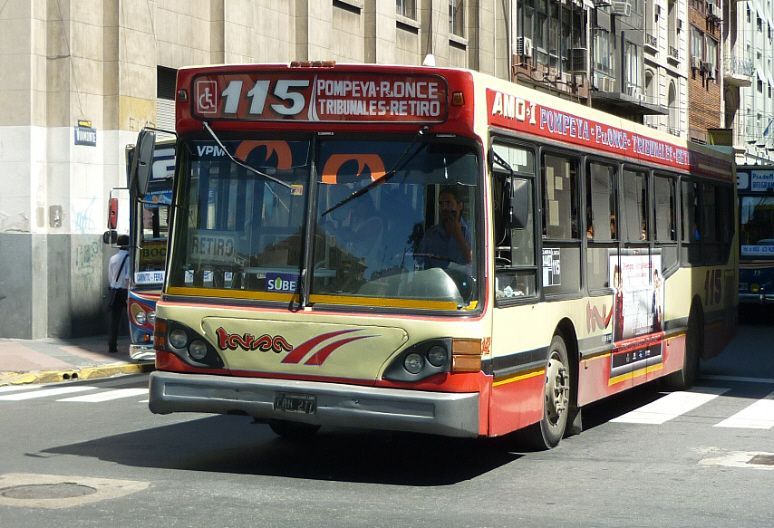
This bus belongs to Tarsa (Transportes Automotores Riachuelo SA), one of scores of companies that are granted concessions for the various routes around the city. Andrew Ved kindly told me what it is. He said "The bus is an Ottaviano Amo 1, with a Mercedes 172x chassis. This is Latin America's entry level 12m chassis. In Argentina it's mostly used in low floor 4cyl buses. It's from 1998, one of the earlier full-size low-floor buses there. They're still in use as school buses and for private services but not on any public lines." Many thanks Andrew.

Route 29 runs roughly north-south, along the length of Buenos Aires' shoreline with the River Plate, from Boca to Belgrano, effectively linking the two fiercely rival football teams in the city. The blue and white livery looks more like Boca Juniors to me. The bus itself is a Mercedes, and is no. 13 (IOS 249) from the fleet of Emp.de TTE. Mendoza Pedro de Com.e Ind (I think).
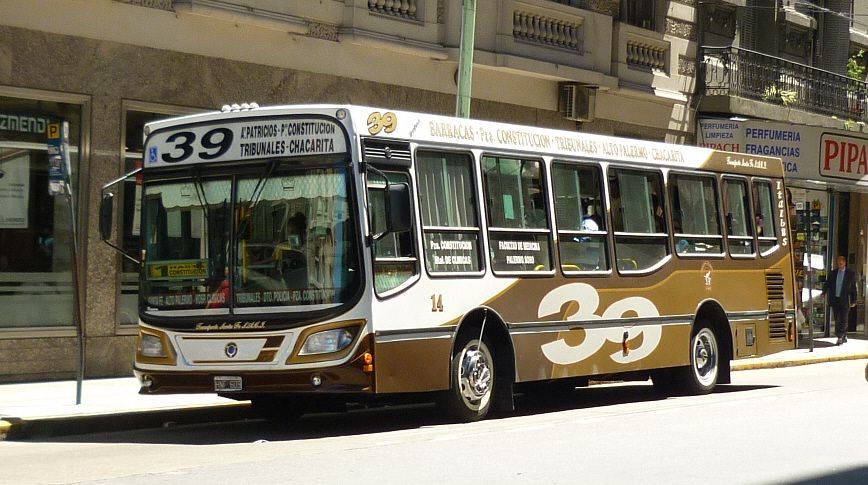
Route 39 starts in the port area of La Boca, and heads north-west into the centre of the city, where it winds around in a circle, ending at Av. Jorge Newbery, named after the founder of Argentina's air force. This is no. 14 from the fleet of Santa Fe Transport. Steve Foster said he thought this is a locally-built Carrocerias Italbus and a Tropea model. Italbus has a rather odd website here but it does look right and that logo on the front certainly seems to be the same. Then, in June 2020, David Storey confirmed the idea that it's an Italbus Tropea but also thinks it's a Mercedes-Benz OH 1618L chassis. He also found a photo of an identical example here with a lot more information. He said "The bus is operated by Transportes Santa Fe and the route has its own (very slow loading) page here www.linea-39.com.ar". Thanks a lot Steve and David.
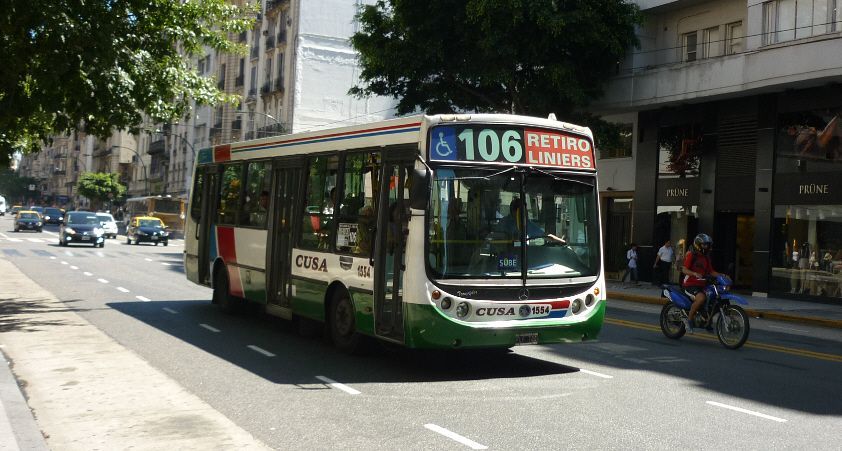
Route 106 runs east-west across the city from the port district of Retiro. This is a Mercedes belonging to CUSA (Colectiveros Unidos S.A.I.F.), fleet number 1554. The body is a Metalpar Tronador, made in Chile. Andrew Ved told me that the company "entered Argentina in the 1990s, had a majority stake bought by Marcopolo in 2010 and stopped manufacturing its own models in 2019. Metalsur used to be Cametal, making Neoplans under license in the 1970s and `980s, as well as some very well-made minibuses and local coaches. They exported to the U. S. and central America in the 1990s." Thanks again Andrew.

CUSA 1550 (IAL 769) is also working Route 106, but this is an Agrale MT15, made in Brazil.
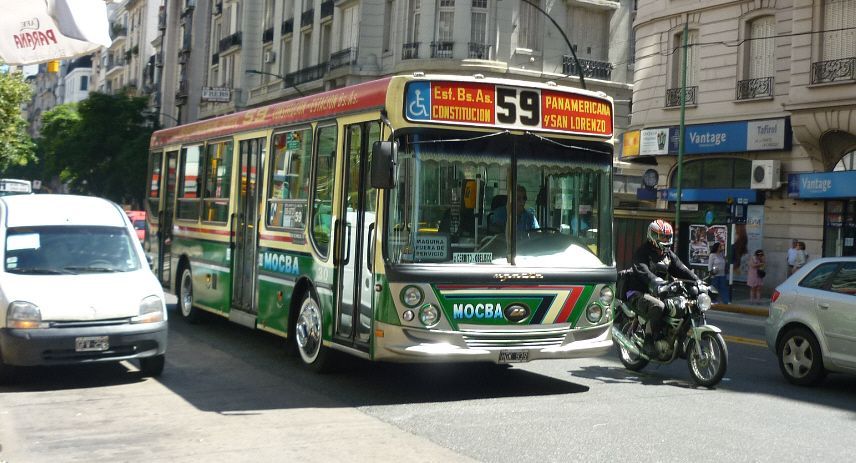
This MOCBA bus, no. 30, is on route 59, which is pretty similar to route 29 mentioned earlier, apart from a few extra twists and turns. The bus is a Mini Europeo, built in Buenos Aires by Autobus S. A. Carrocerias Ugarte and based on a Mercedes.

Here is a rear view of MOCBA (Micro Omnibus City of Buenos Aires) no. 102 taking a short break from working Route 59.

These devices turn up everywhere on commercial vehicles, and I couldn't work out what they might be for. Eventually I was told that they maintain tyre pressures. Clever idea, isn't it?

Route 152 is yet another coastal service from Boca to Olivos, similar to those mentioned above. This is Tandilense (Tandil Sacifiy Co.) no. 58, a locally-built Ugarte Europeo.
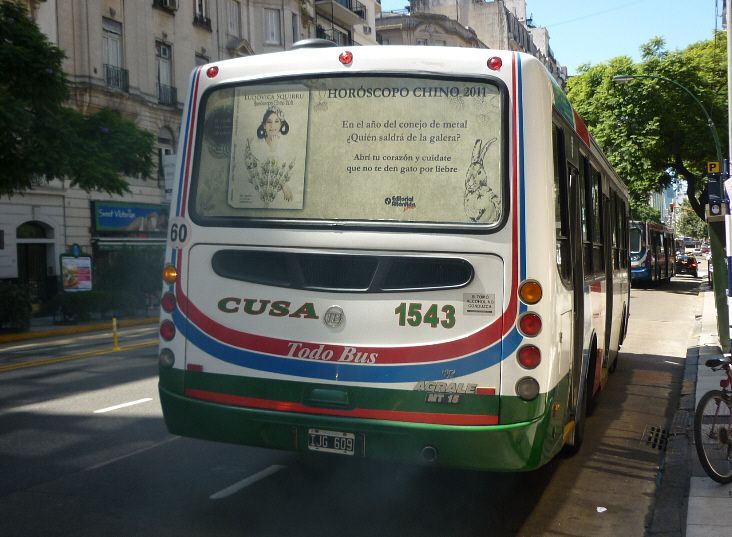
Here is the back of CUSA no. 1543 (IJG 609) on Route 106. The advert in the rear window for a Chinese horoscope service confirms that this was the year of the rabbit. This bus is another Agrale MT15 from Brazil.

So we return to our original topic, and this confirms once again that school buses are orange and white. The vehicle nearest the camera is an El Detalle OA101. This Argentinean bus manufacturer started building bus bodies in 1964 and chassis in 1987, but closed down in 2006 (although Brazilian subsidiary IndABra continued trading for another couple of years).
If you can add more details to the pictures on this page, I'd be delighted to hear from you.
Postcript:
Nicholas Pusenjak from Australia sent me the following in December 2011:
"I visited South America with a group of railway enthusiasts in 1975. Most buses in Buenos Aires were Mercedes-Benz, and appeared to be derived from lorry chassis. Tourist coaches and long distance buses were Magirus Deutz or Mercedes with local bodies. I saw a handful of Leylands including a Panther coach. Somewhere out in the sticks at night (hence no photo) I saw an AEC Regal Mark IV badged as an ACLO. The MCW-bodied Leyland Olympic (see below) was down by the docks at Boca - well and truly out of service."

The bus in the foreground is certainly an interesting British relic, possibly painted as a school bus, but long since abandoned. The Olympic was Leyland's first underfloor-engined integral bus, introduced in 1949 and bodied by MCW. It should have appeared in 1948 to coincide with the London Olympic Games (hence the badge), but ran late! A very successful export (it was too much of a fuel-thirsty heavyweight for the home market), it continued in production in various forms into the early 1970s. Argentina and Uruguay both bought large fleets of them.
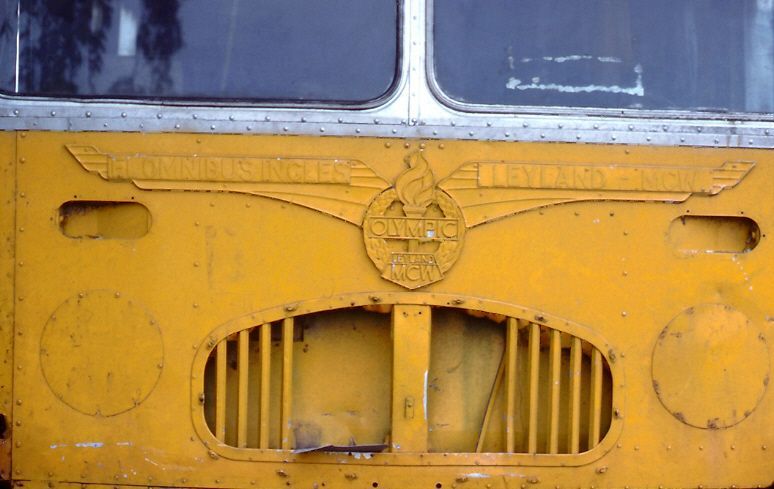
A close-up of the front shows the inscription El Omnibus Ingles (The English Bus), Leyland - MCW. Many thanks to Nick for the pictures.
Postscript; Sadly Nick Pusenjak passed away suddenly in May 2017. He had been sending me photos and comments from Australia for years and was an amazing source of information about Australian buses and other old transport matters. His contributions can be found all over this website, and will remain there for ever as my tribute to a fine fellow who is sadly missed.
For an amazing history of buses in Argentina see the BusARG website by Alejandro Scartaccini.
Email Events diary Past events list Classified adverts Classic U.K. Buses Classic Irish Buses Classic Manx Buses